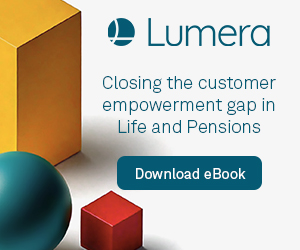It is “entirely possible” for well-funded smaller schemes to complete both a buy-in and a full wind-up within two years with the right preperation, Cartwright director of administration, Julie Yates, has said.
Yates noted that 2024 has seen many schemes, often unexpectedly, well-funded and wishing to undertake risk transfer and wind-up, acknowledging that whilst the market is opening up with new insurers, there are still cases where trustees of smaller and medium-sized schemes are struggling to get traction.
“There are two main reasons for this; the legacy issue of many administrators struggling to cope and brokers prioritising transacting larger, and let’s face it, more lucrative schemes,” she explained, noting that even already bought-in schemes often won’t get follow through from their administrators.
She continued: "Data & benefit verification, guaranteed minimum pension (GMP) equalisation, buyout and wind-up can drag on for years leading to ongoing running costs and the potential for buy-in terms to be breached.
“Some administrators are even struggling to complete GMP equalisation within two years let alone anything else. Having a clear two-year plan enables key parts of the project to be run in parallel and prioritised to meet that goal.”
Adding to this, Cartwright director of investment consulting, Sam Roberts, pointed out that “you don’t have to look far in the news to see smaller schemes transacting buy-ins”, arguing that, if they are in good shape, it is perfectly possible to attract interest from insurers.
He continued: “The key is in preparation and working with an adviser that understands the nuances of working with smaller schemes.
"Many advisers are tagging on small scheme “streamlined” offerings to larger scheme offerings in an effort to scoop up volume, but without giving each scheme the tailored care and attention they need to get the best value for the scheme at the pace that is right for the trustees and sponsor.
“Furthermore, trustees and sponsors are now aware that the buy-in transaction is only the first part of the project – it is just as important to have the right adviser/administrator in place for buyout and wind-up. Sadly, this is a trap many schemes are falling into.
“Smaller scheme expertise, and resourcing capacity ahead of client demand, is crucial for success on both parts of this critical project.
"We increasingly see trustees exercising caution when selecting their buy-in transaction advisor/administrator to avoid risk getting stuck on what could otherwise feel like an endless treadmill to wind-up.”
Latest News
-
DB pension redress liabilities likely to be below 5% of transfer values
-
Nest acquires 10 per cent stake in IFM Investors
-
Govt urged to put sustainability at core of its growth agenda
-
Over 150,000 estates face new or additional IHT liability between 2027 and 2030
-
Pension trustees urged not to 'lose sight' of urgency of climate issues
-
Over 2.3 million savers failing to claim tax relief on pensions
Being retirement ready
Gavin Lewis, Head of UK and Ireland Institutional at BlackRock, talks to Francesca Fabrizi about the BlackRock 2024 UK Read on Retirement report, 'Ready or not. How are we feeling about retirement?’
Time for CDI
Laura Blows speaks to AXA Investment Managers (AXA IM) senior portfolio manager for fixed income, Rob Price, about cashflow-driven investing (CDI) in Pensions Age’s latest video interview
The role of CDC

In the latest Pensions Age podcast, Laura Blows speaks to TPT Retirement Solutions Chief Client Strategy Officer, Andy O’Regan, about the role of collective DC (CDC) within the UK pensions space
Keeping on track

In the latest Pensions Age podcast, Sophie Smith talks to Pensions Dashboards Programme (PDP) principal, Chris Curry, about the latest pensions dashboards developments, and the work still needed to stay on track
© 2019 Perspective Publishing Privacy & Cookies














Recent Stories